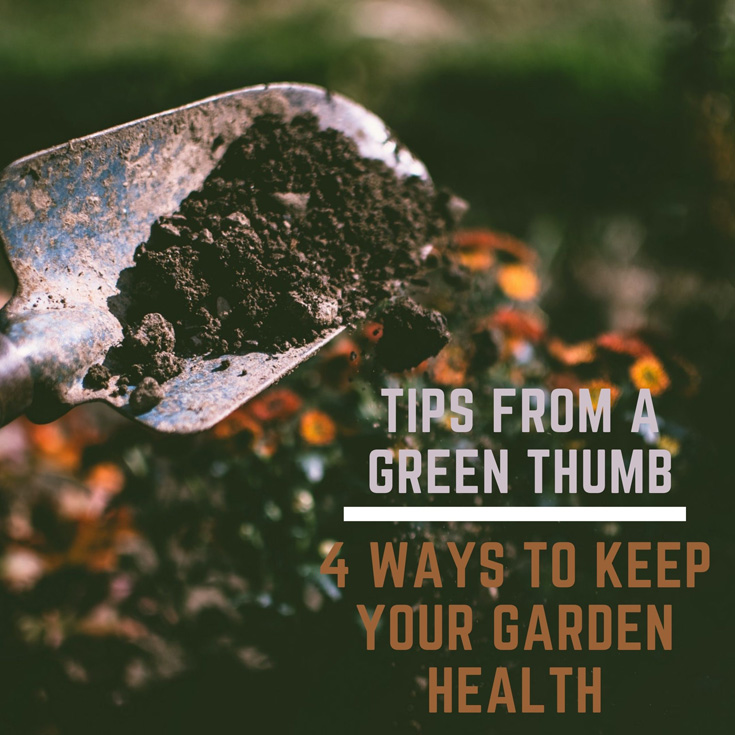A beautiful garden packed with fresh vegetables and sweet-smelling flowers will immediately raise every home’s visual appeal. It’s not that easy to cultivate such a gorgeous display of plant life. Even among those who find themselves meticulous in overlooking their gardens, can attest to the difficulty of growing such a garden.

Whether you’re an enthusiast with a green thumb or an expert at growing things, it’s undeniable that you face a lot of problems when growing a healthy and visually stunning garden.
Among the most perplexing things that could happen in your garden is whenever your plant catches a disease. When has it happened? Would it spread? Will my plants soon end up dying? How will I get control of this? Continue reading to know more.
Before Buying – Check The Plants Carefully
In your garden, the best way to minimize the effect of disease is to prevent it from developing in the first place. A plant that’s infected is never a good thing as you and your garden will suffer. Spotting a sick plant might be difficult because its appearance can be deceptively healthy and attractive, making it hard to identify whether one is infected.
Do not consider taking in a plant with insects, rotted stems, and dead spots in your garden. These problems, especially pests, can spread quickly throughout your healthy plants and can often be difficult to get rid of.
Always check the consistency of the roots, in addition to evaluating the tops of plants. With the plant stem among your fingers, put your hand onto the surface of the soil. Rotate the pot carefully and shake the plant loosely. To release the roots from its pot, you can tap the pot’s edge on firm ground.
Roots must be solid, commonly white, and spread all around the root ball. It is not a positive sign if it’s mushy or if its roots are dark in color. It’s only a question of how long before an unhealthy root can damage your plant.
Pay attention to destructive pests that might also infest your vegetable garden. One of these pests is cabbage loopers. To get rid of and understand more about cabbage loopers, you can find detailed instructions here.
Eliminating Cabbage Loopers From Your Garden
Not all small caterpillars with huge appetites are cabbage loopers, but they could be one of the most harmful pests in your vegetable garden. These pests particularly love eating cabbage, collard greens, kohlrabi, cauliflower, and broccoli. This pest is also known to invade cucumbers, spinach, tomatoes, and potatoes.
These caterpillars appear as tiny green worms with white or silvery streaks. They’re 2 inches long and are extremely voracious. Check for them during spring and fall now and then. The caterpillars are the white cabbage butterflies’ larval form. Look closely for its larvae whenever you see adult butterflies within your yard.
They usually eat small holes within the leaves and hide on the lower part of the foliage. Their light greenish color makes it hard to recognize them.
Controlling Cabbage Loopers
Here are some ways to help secure your plants against cabbage loopers.
Row Covers
Prevent white cabbage butterflies from laying eggs onto plants by providing a floating line covering during the spring. These rows create barriers that prevent the pests from landing on your plants while at the same time, allow moisture, light, and air to get to the plants. If the temperatures heat up too high during summer, you would need to cut the row covers.
Hand Picking
By catching the pests in your plants and placing them into containers of soap and water, those tiny groups of cabbage loopers can be under control.
Insecticides and Insecticidal Soaps
Insecticidal soaps can also destroy some caterpillars, but it should be a severe infestation on a daily schedule since if not made regularly, no cabbage looper eggs might be killed. A variety of insecticides are also effective at destroying cabbage loopers. Be sure to implement the package directions properly.
Attracting Beneficial Insects
Be careful when using insecticides to eradicate pests. These insecticides can potentially kill beneficial insects and creatures. As an alternative, you can also grow certain plants that attract these beneficial insects. Flowers can attract bees which can greatly help with pollination and plant growth.
Not only that, you should also attract predatory insects that feed on pests. One perfect example of these predators are Ladybugs. Ladybugs might look pretty but in reality, they’re voracious predators that feed almost exclusively on pesky aphids.
Cleaning Up During The Fall
Even though you reside in a mild climate, it is always better to sweep out your garden throughout the fall. It is an efficient deterrent to diseases but still a safe method to defeat diseases already in your garden.
As they arise throughout spring, diseases can survive the winter on rotting leaves and wreck, and soon target the newer and healthier leaves. Types of diseases that can be gradually reduced when the dead leaves are cleaned off every fall include the black spots on roses, daily leaf streaks, and iris leaf spots.
Removing spent plant material from your garden would be the next step in cleaning your garden. It is necessary to dispose of and remove old vegetables and fruit, dead plants, and any infected plants from your garden beds. With proper treatment, dead plant matter can be composted and is healthy for your garden.
Takeaway
It takes more hard work to keep your garden healthy, and pests free all year round. It is the most fulfilling achievement as a gardener to keep your garden green while feeling the enjoyment with all your effort and making sure the damage is prevented first before it develops.






Speak Your Mind